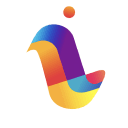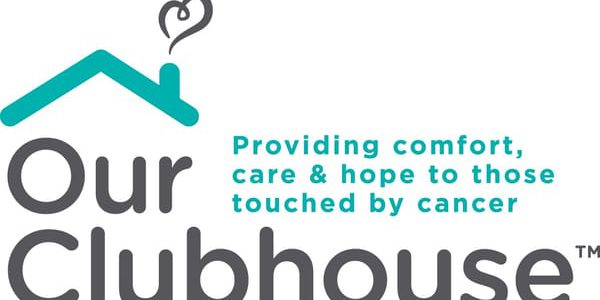Even before the COVID-19 pandemic forced workers out of the office and into remote situations, many companies were in the search for HR toolkits and apps like Slack and LEAD.bot to facilitate communication and employee connection. Our Clubhouse, now part of Cancer Bridges, started using LEAD.bot in February of 2020, just before the pandemic changed the in-office workspace.
“The team opted in for use to connect employees for social conversations and to ‘just talk’ “, says Stephanie Ciranni, Marketing and Communications Manager for Our Clubhouse. “Nearly immediately following implementation, the COVID-19 pandemic arrived, and LEAD was used during our time working at home.”
Even though Our Clubhouse was just a moderate size organization, the benefits of meeting up for quick chats via LEAD.bot were clear. “It was important to our team to continue the casual conversation during the period of required social distancing and work from home,” notes Stephanie.
LEAD.bot embraces the casual water-cooler conversation and makes chatting with coworkers over virtual coffee easier. By taking the time out of associates’ days to meet for conversation, Our Clubhouse was able to keep social connections and communication strong. As Stephanie mentions, “the option to match two employees for a 15-minute chat and connect about non-work topics was the perfect way to do so.”
Communicating Through Difficult Circumstances
Like other businesses and organizations, Our Clubhouse thrives on open communication. However, communication plays a larger role at Our Clubhouse than it might elsewhere. As a business that works closely with those affected by cancer, the associates at Our Clubhouse often engage in emotional conversations with those who seek help.
These difficult emotional interactions can take a toll on Our Clubhouses’ associates, and before the pandemic, associates would talk with each other about non-work topics to try and relieve some of that stress.
It was fortunate for Our Clubhouse to discover Slack and LEAD.bot before the pandemic started as they leaned heavily on the tools to communicate during work from home. Because they had already gotten exposed to both tools, the switch from office to remote work was made a little easier. As Stephanie notes, “having the ability to use Slack and LEAD.bot during the transition to our houses was huge!”


The quick 15-minute talks between associates gave everyone the chance to engage and take an emotional break from their difficult work, which is important for their well-being. After a quick talk and refresh, associates could then get back to helping those impacted by cancer gracefully.
While Our Clubhouse lost the benefits of being able to check up on each other in-person, LEAD.bot facilitated communication between the team, which leads to many serendipitous connections among associates. “It helped us to continue encouraging communication within our team even though we were not in the building together,” says Stephanie.
Using LEAD.bot
Curious about the functions of Slack, Our Clubhouse explored some of the integrations available and had LEAD.bot recommended by Slack. After choosing the application, the team enjoyed both the functionality and ease of LEAD.bot.
“When associates are working in-person at the office site, communication happens effortlessly,” says Stephanie. “However, when working remotely that does not occur. This app helped us make space to connect.”
Our Clubhouse also enjoyed how responsive LEAD.bot was for their needs. Stephanie mentions that, after scheduling a meeting, LEAD.bot would send a follow-up message to confirm the meeting, which makes it easy for remote team members to keep track of their scheduled meetings.
The biggest benefits that LEAD.bot’s users find are the usefulness for remote work, hybrid work, and the ease of use. Anyone that currently uses Slack or Teams can quickly integrate LEAD.bot to facilitate the set-up and tracking of the virtual water-cooler matching channel.
Even businesses that don’t institute any type of remote work policy can benefit from LEAD.bot. Our Clubhouse tested the application before the pandemic began and enjoyed the benefits. Larger organizations could find plenty of utility in LEAD.bot, too, especially organizations with dozens — or hundreds — of workers who might be searching for ways to facilitate cross-channel collaboration. LEAD.bot makes this easier than ever.
Preparing For A Post-Pandemic Workplace
Remote work has become commonplace for many workers, but the drive to return to the office is natural for some. In some instances, the benefits of in-person work cannot be replicated online. “Zooming is great,” says Stephanie, “but being in a room together is better.”
After 13 months of working entirely remotely, Our Clubhouse now operates on a hybrid work culture with associates coming into the office two days a week. For the rest of the week, associates continue to help those impacted by cancer from their homes.
Our Clubhouse is not alone in its new format. Many businesses have decided to implement a hybrid — or even full remote — policy for their workers. Of course, any amount of remote working means that Our Clubhouse loses the benefits of in-person collaboration. So, their plan is to continue using LEAD.bot for the foreseeable future, and even after they start to work more and more in their office.
Businesses around the world are starting to return some, or all, of their workforce into the office. However, the benefits of using HR tools like LEAD.bot to create employee engagement, build trust and camaraderie within your organization have become clear, and many organizations continue to implement and utilize the use of LEAD.bot’s cool features.
Other organizations have now implemented full remote policies, and this presents challenges that Our Clubhouse encountered. “I think it’s important to find ways to stay connected as a staff, and that can be difficult when working virtually,” notes Stephanie. Fortunately for organizations like Our Clubhouse, LEAD.bot helps make the switch to a remote workplace a better experience for everyone.












